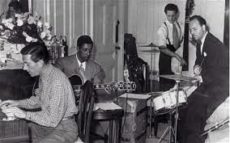
Daily Dose Of Jazz…
Joe Mudele also Joe Muddel was born on September 30, 1920 in Downham in the south-east of London, England. His father died in 1931 following the consequences of a war and after leaving school at the age of 14, he worked as a singer in a cinema and soon played in local bands. He served in the RAF during the Second World War where he had lessons with James Merritt, contrabassist at the Philharmonia Orchestra.
1946 saw Mudele beginning to work as a professional musician, initially as a member of the Tito Burns Sextet. He met Ronnie Scott and John Dankworth and with them he belonged to the group of musicians who held the first bebop sessions as Club Eleven. To listen to Charlie Parker he attended the Festival International 1949 de Jazz and had the opportunity to play two numbers with Parker and his drummer Max Roach.
At the beginning of the 1950s, Mudele was a member of the Club Eleven Johnny Dankworth Seven but he soon left for family reasons to work the Coconut Grove nightclub in London’s West End. He toured with musicians like Hoagy Carmichael, Sophie Tucker, Judy Garland and Billy Eckstine. In 1951, he formed his own band with saxophonist Joe Harriott.
In the 1940s and 1950s, Alan Dean, Ralph Sharon, Larry Adler, Humphrey Lyttelton, Tommy Whittle, the Melody Maker All Stars in 1952 and 1955, and George Chisholm and Sid Phillips. In the 1960s, he recorded with Johnnie Spence and Alan Branscombe while his last recordings under his own name were made with pianist Robin Aspland and Geoff Gascoyne on drums.
Between 1948 and 2010 he performed on radio and television with Mantovani, Cilla Black, Yehudi Menuhin, Stéphane Grappelli, and the Big Ben Banjo Band, and the Sing Something Simple radio program. He also played regularly at the Bexley Jazz Club.
He recorded some 52 jazz recording sessions, however, outside the jazz he also played on recordings with Johnny Mercer, Barry Gray, John Williams and the Cliff Adams Singers. Bassist Joe Mudele, one of the pioneers of bebop in England, passed away on March 7, 2014.
More Posts: bass
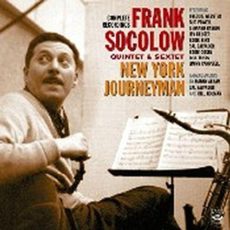
Daily Dose Of Jazz…
Frank Socolow wa born on September 18, 1923 in New York City and began his career in the early 40s playing in swing bands led by Georgie Auld, Ted Fio Rito, Roy Stevens, Van Alexander and Shep Fields. In 1944 he landed the first of three stints that spanned into the late Fifties with the Boyd Raeburn Orchestra and recording a number of records.
1945 saw Frank recording his first of two sessions as a leader with Freddie Webster and a young Bud Powell for Duke Records. He would go on to join Buddy Rich’s short-lived big band, toured Scandinavia 1947-48 with Chubby Jackson, then joined Artie Shaw’s big band 1949-50. Throughout the late 40s and the 50s he recorded with a wide variety of artists including Johnny Bothwell, Charlie Ventura, Gene Krupa, Sal Salvador, Maynard Ferguson, Terry Gibbs, Phil Woods, Cecil Payne, Manny Albam, Hal McKusick, Johnny Richards, Bill Russo, Joe Morello, and Bobby Scott.
His second record session as leader and only full album release, Sounds by Socolow, came in 1956 for Bethlehem Records, with arrangements by Bill Holman, Manny Albam, and Sal Salvador, the latter also contributing guitar. Tenor saxophonist and oboist Frank Socolow passed away on April 30, 1981 in New york City.
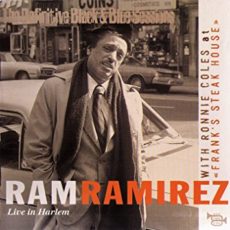
Daily Dose Of Jazz…
Ram Ramirez was born Roger J. Ramirez on September 15, 1913 in San Juan, Puerto Rico and grew up in New York City. He started learning piano when he was eight and was a professional five years later. In the early Thirties he worked with the Louisiana Stompers, Monette Moore , Rex Stewart, the Spirits of Rhythm and Willie Bryant.
Traveling to Europe with Bobby Martin’s group from 1937 to 1939, when Ramirez returned to New York City and had his own band before working with Ella Fitzgerald, Frankie Newton and Charlie Barnet in the Forties. After a second stint with Newton, he played with the John Kirby Sextet in 1944.
Ram mostly led his own trio from the mid-1940’s on and began doubling on organ in 1953. Active into the 1970’s. playing with the Harlem Blues and Jazz Band at the end of the decade. He became semi-active in the 1980’s and never gaining much fame except among knowledgeable musicians in the swing, bop and trad settings.
Through the years he led sessions for Gotham, Super Disc, Black & Blue, RCA and Master Jazz. He also played with Helen Humes, Putney Dandridge, John Kirby, Ike Quebec, Rex Stewart, Annie Ross, King Pleasure and Duke Ellington’s Small groups. Pianist and composer Ram Ramirez, best known as a co-writer of the classic song Lover Man (Oh, Where Can You Be?, passed away on January 11, 1994 in Queens, New York.
More Posts: piano
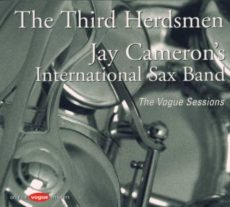
Daily Dose Of Jazz…
Jay Cameron was born on September 14, 1928 in New York City and began as an alto saxophonist only to later record with bass and B-flat clarinet and baritone saxophone.
He began his career in the early 1940s in Hollywood with Ike Carpenter‘s band, with whom he played until 1947. He moved to Europe near the end of the decade and played with Rex Stewart, Bill Coleman, Roy Haynes and Henri Renaud in France and Italy. In the early 1950s Cameron gigged around Belgium, Germany, and Scandinavia and by 1955 he played steadily in Paris, France with a band that included Bobby Jaspar, Barney Wilen and Jean-Louis Chautemps.
Returning to the United States in 1956, Jay played in bands led by Woody Herman and Slide Hampton as well as collaborations with Chet Baker, Dizzy Gillespie, Maynard Ferguson, Freddie Hubbard, Candido Camero, Bill Barron, André Hodeir, Hal McKusick, and Les and Larry Elgart.
He was the leader of the International Sax Band and the Third Herdsmen. And in the late 1960s he toured with Paul Winter. He continued to be an active musician and advocate for jazz programming and education throughout his life. Baritone saxophonist and reed player Jay Cameron passed away on March 20, 2001 in San Diego, California.
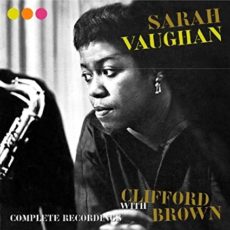
Daily Dose Of Jazz…
John Malachi was born on September 6, 1919 in Red Springs, North Carolina and grew up in Durham, North Carolina. At the age of ten he moved with his family to Washington, D.C., and was a self-taught musician.
Malachi was a member of the Billy Eckstine Bebop Orchestra in 1944 for a year and then again in 1947. He worked with Illinois Jacquet in 1948, Louis Jordan in 1951, and a series of singers including Pearl Bailey, Dinah Washington, Sarah Vaughan, Al Hibbler, and Joe Williams.
Opting out of the traveling life of the touring jazz musician in the 1960s, he lived approximately the last decade and a half of his life in Washington, D.C. freelancing, playing with touring bands and artists when they stopped in the city, and leading music workshops at clubs like Jimmy MacPhail’s Gold Room and Bill Harris’s Pig’s Foot. Malachi’s generosity towards younger musicians was legendary. His workshops with young musicians was referred to as The University of John Malachi.
He is credited with creating the nickname “Sassy” for Sarah Vaughan, with whom he worked with the Eckstine Orchestra and later directly with her. Pianist John Malachi, who was fond of categorizing jazz pianists into acrobats and poets, and considered himself among the latter, passed away on February 11, 1987 at the age of 67 in Washington, DC.
More Posts: piano





